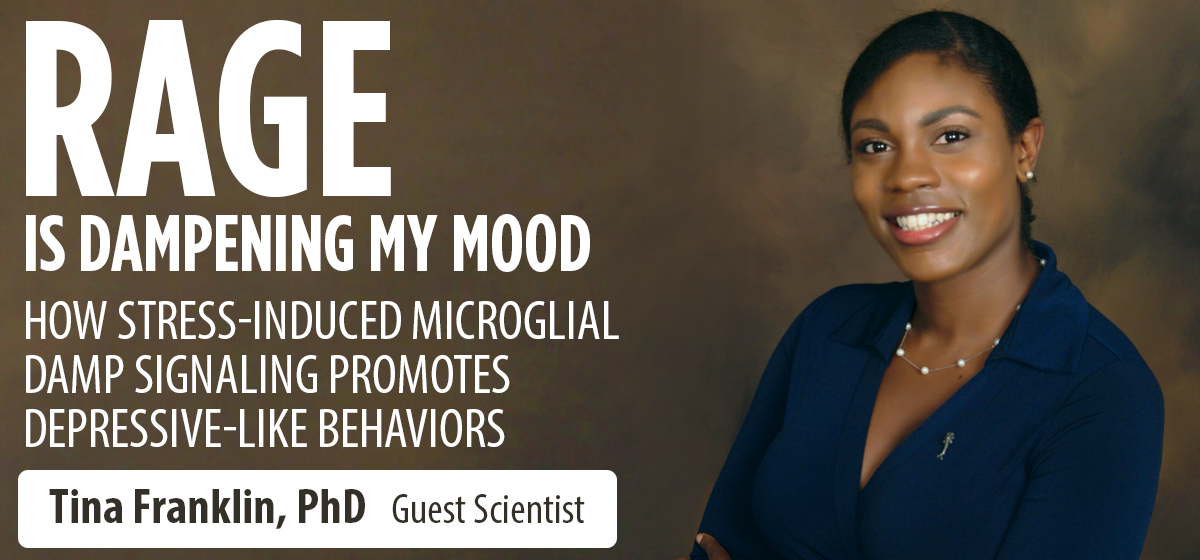RAGE is a dampening my mood:
How stress-induced microglial DAMP signaling promotes depressive-like behaviors
Tina Franklin, PhD
Date: Friday, Sept. 30, 2016
Time: 12:00 noon
Location: Siena (NHS) 102
Maladaptive alterations that result from severe or chronic stress exposure are associated with increased risk for Major Depressive Disorder (MDD). Chronic stress promotes dysregulation of the innate immune system leading to enhanced inflammatory signaling often associated with depressive symptomology. Growing evidence suggests that innate immune cells such as microglia, promote neuroinflammation in response to stress by releasing danger associated molecular pattern (DAMP) molecules leading to increased inflammatory signaling. One DAMP of interest is the endogenous factor high mobility group box 1 (HMGB1), which promotes inflammatory signaling through its ligation to pattern recognition receptors such as toll-like receptor 4 (TLR4) and the receptor for advanced glycation end products (RAGE). Our preliminary studies show that enhanced microglial HMGB1-RAGE expression coincides with the onset and recurrence of stress-induced depressive-like behaviors. Here, I will present data from ongoing studies that examine the role of RAGE signaling in the development of depressive-like behaviors. In addition, we will discuss how RAGE signaling within microglia contribute to neuro-inflammation and may promote persistent autocrine feedback following chronic stress. Together, these data provide novel insights into the role of RAGE signaling in stress-induced microglial reactivity and the development of depressive-like behaviors.

